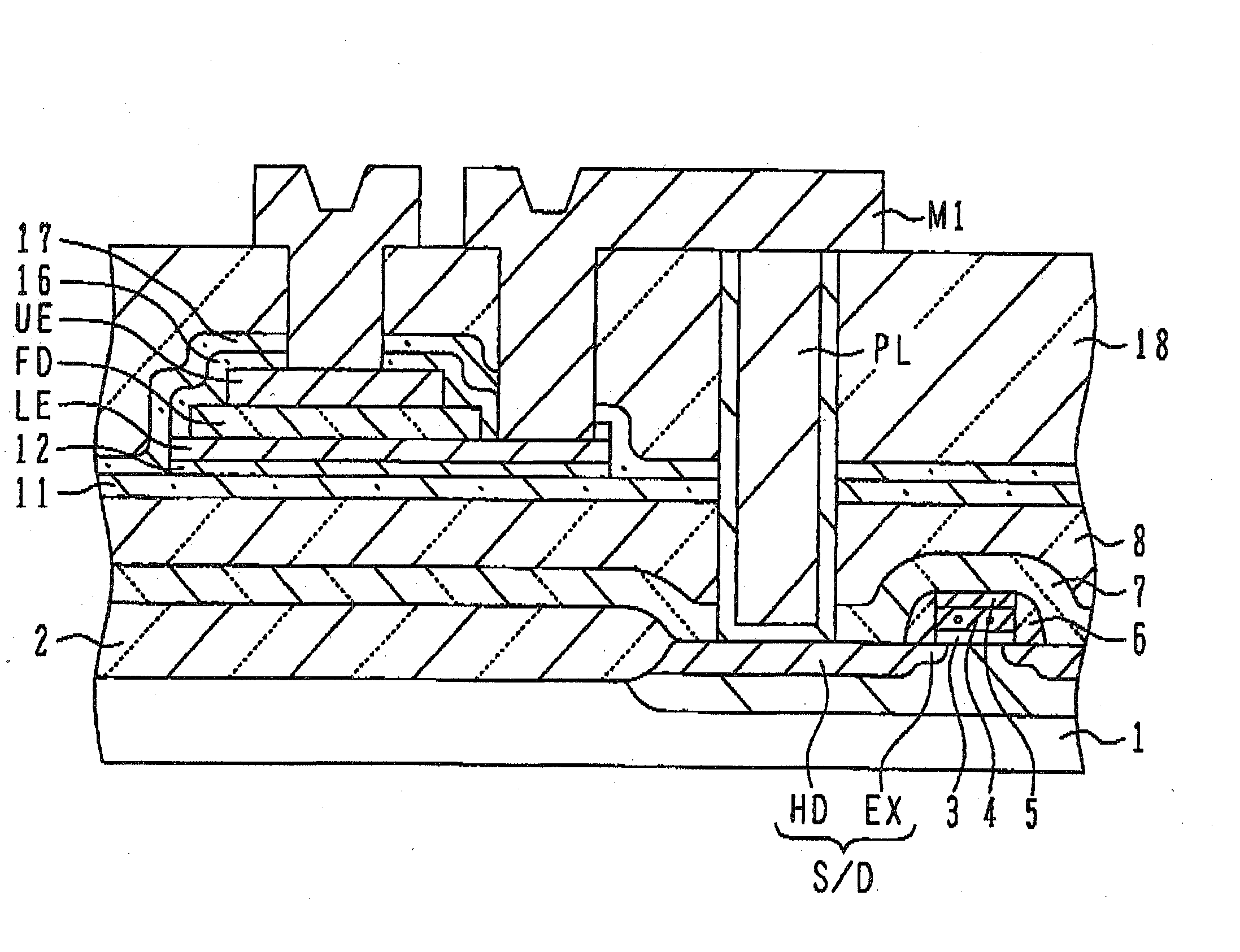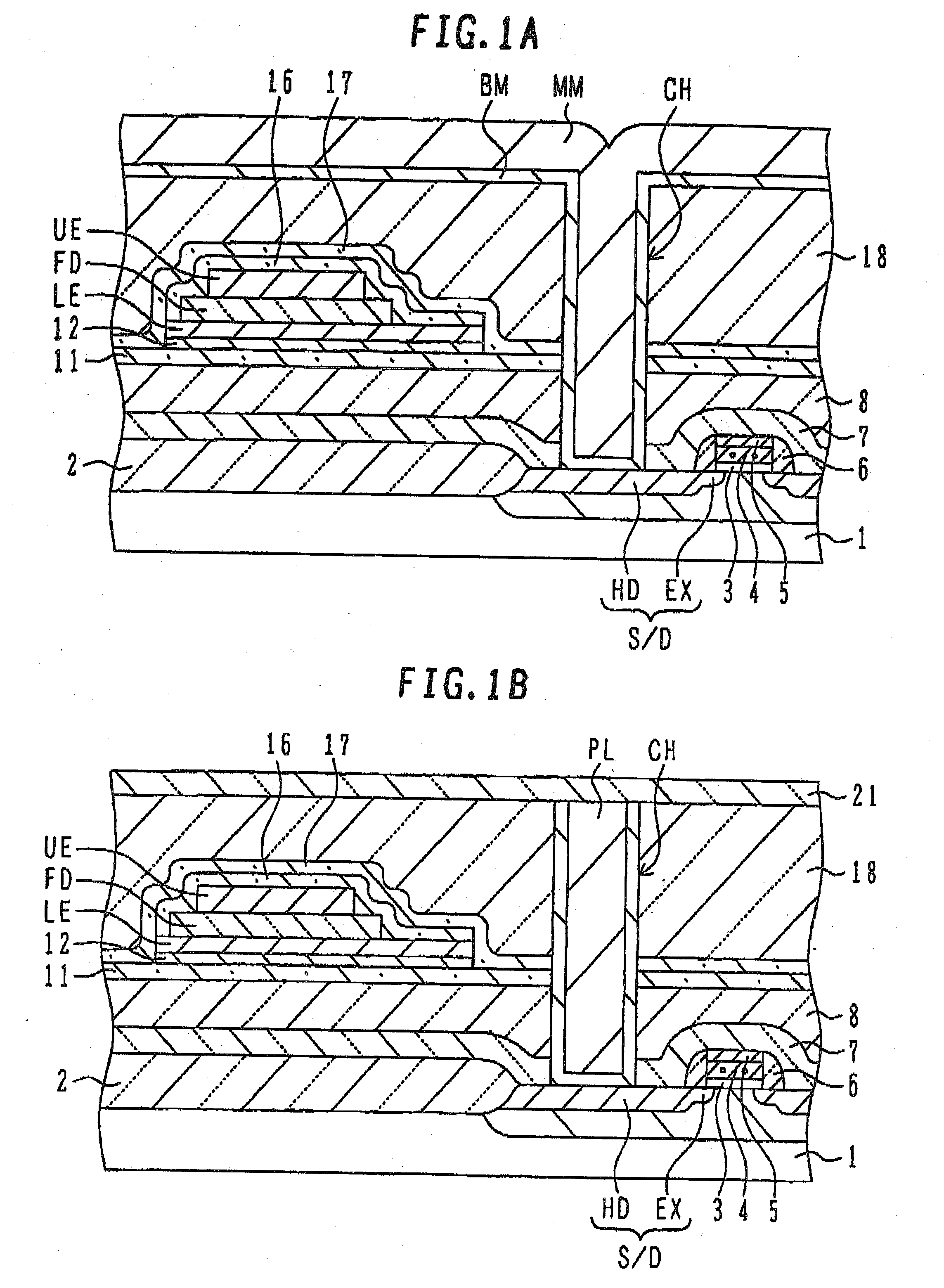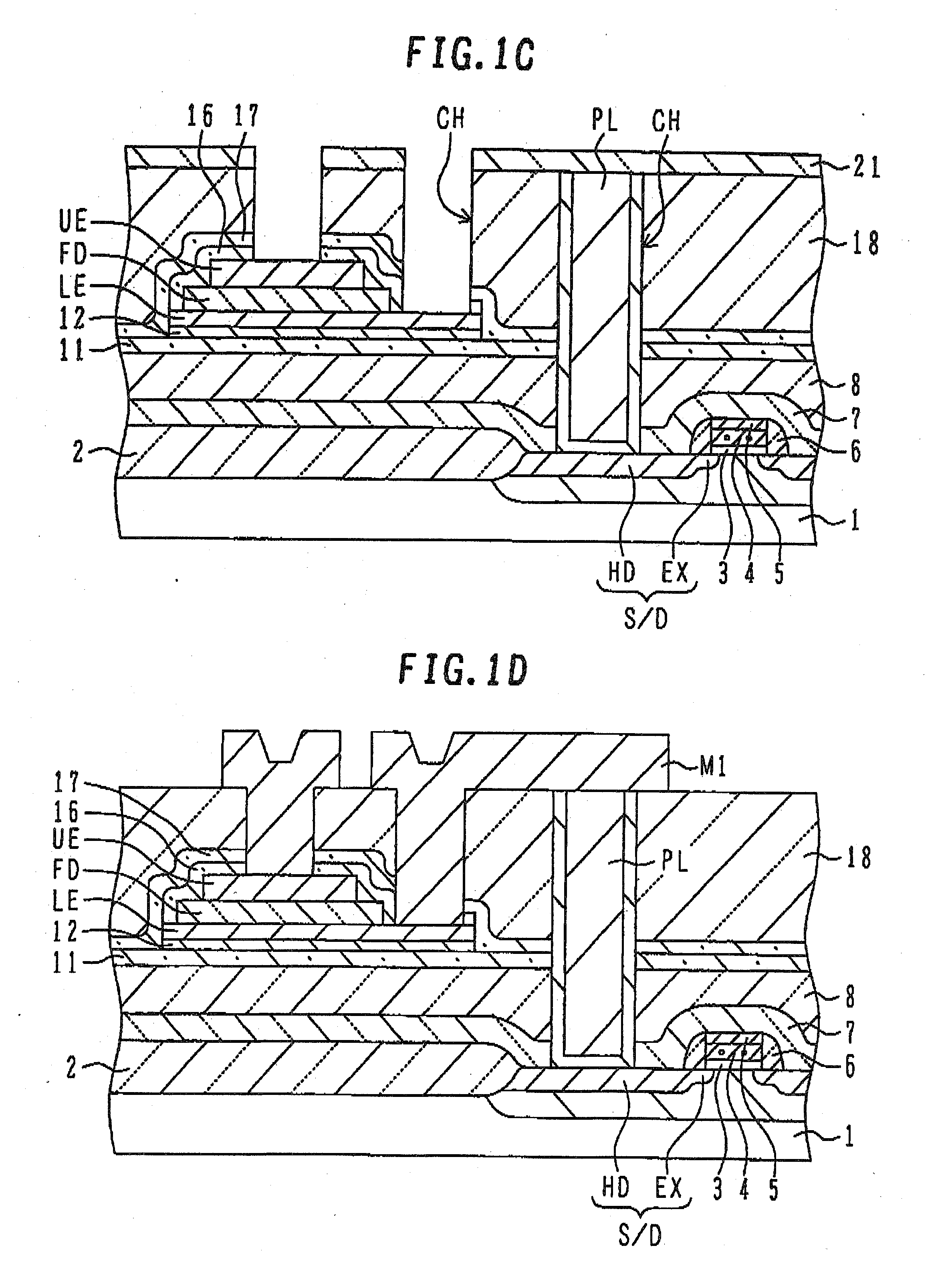Semiconductor device with ferro-electric capacitor
- Summary
- Abstract
- Description
- Claims
- Application Information
AI Technical Summary
Benefits of technology
Problems solved by technology
Method used
Image
Examples
first embodiment
[0049]FIGS. 1A to 1D illustrate a method for manufacturing the semiconductor device of the present invention based on the above-described experiment results and show a manufactured semiconductor device.
[0050]As shown in FIG. 1A, in the surface layer of a semiconductor substrate 1 such as a silicon substrate, an isolation region defining active regions is formed, for example, by local oxidation of silicon (LOCOS). A p-type well is formed in the region where an n-channel transistor is to be formed, and an n-type well is formed in the region where a p-type transistor is to be formed. Description will be made hereinafter on forming an n-channel transistor by way of example. For the p-channel transistor, conductivity types are reversed.
[0051]The surfaces of active regions are thermally oxidized to form a gate oxide film 3 having a thickness of, e.g., 10 nm. A polysilicon film 4 and a silicide layer 5 of WSi2 are formed on the gate oxide film 3 and patterned to a gate electrode structure....
second embodiment
[0074]Description has been made on forming a planar type ferro-electric capacitor on an insulating film. A stack type is also possible, wherein a ferro-electric capacitor is formed on a conductive plug. In the following, with reference to FIGS. 6A to 6F, description will be made on the second embodiment in which a stack type ferro-electric capacitor is formed.
[0075]As shown in FIG. 6A, an isolation region 2 is formed in the surface layer of a semiconductor substrate 1 such as a silicon substrate by shallow trench isolation (STI) or the like. Ions are implanted to from a p-type well PW and an n-type well NW.
[0076]MOS transistor structures are formed by processes similar to those of the first embodiment. Namely, a gate oxide film 3 is formed by thermally oxidizing the active region surfaces, and a polysilicon film 4 and a silicide film 5 are formed and patterned to form gate electrodes. An n-type gate electrode is formed above the p-type well, and a p-type gate electrode is formed abo...
PUM
 Login to View More
Login to View More Abstract
Description
Claims
Application Information
 Login to View More
Login to View More - Generate Ideas
- Intellectual Property
- Life Sciences
- Materials
- Tech Scout
- Unparalleled Data Quality
- Higher Quality Content
- 60% Fewer Hallucinations
Browse by: Latest US Patents, China's latest patents, Technical Efficacy Thesaurus, Application Domain, Technology Topic, Popular Technical Reports.
© 2025 PatSnap. All rights reserved.Legal|Privacy policy|Modern Slavery Act Transparency Statement|Sitemap|About US| Contact US: help@patsnap.com



